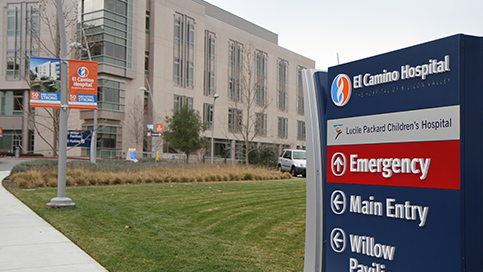Navigating the Future: The Critical Role of Wayfinding Signage Consultants in User Experience Design
In an era when digital interfaces and virtual experiences are constantly vying for our attention, tactile, immediate engagement with physical spaces remains an irreplaceable aspect of the human experience. Whether we find ourselves wandering through bustling city centers, navigating the mazes of healthcare facilities, or simply trying to traverse complex events and urban spaces, the art and science of 'wayfinding' guide our paths.
This invisible—yet instantly recognizable—force is fundamentally rooted in the design and placement of signage, a deceptively simple element of spatial architecture that profoundly shapes our interactions with the built environment.
The Canvas of Wayfinding
The concept of 'wayfinding' encompasses both the set of behaviors individuals engage in to spatially orient and find their path and the environmental clues designed to facilitate this process. Whereas traditional wayfinding relied heavily on human elements—such as physical guidance by personnel, environmental affordances, and printed maps—signage has emerged as a focal point and a stark testament to the power of design in human interaction.
The Significance of Signage
Why does signage, particularly in the context of wayfinding, warrant such attention? The answer echoes in the simplicity of its necessity; poor or inadequate signage can render even the most thoughtfully designed space an achronic puzzle, while well-implemented, thoughtful wayfinding systems can convert confusion into confidence and lost time into more meaningful engagement with one's surroundings.
Elements of Effective Signage
The art of wayfinding signage comprises several elements, from clear typography and intelligible symbol systems, to strategic placement that anticipates and responds to the user's mental map. It should draw from principles of environmental psychology, human perception, and cognitive ergonomics, melding these disciplines to create an intuitive beacon for the traveler.
The Consulting Compass
Enter the wayfinding signage consultant, a professional dedicated to the marriage of navigational efficiency and aesthetic integrity within the confines of architectural design.
Who Are These Consultants?
At the intersection of user experience design, graphic communication, and spatial planning, wayfinding consultants are multidisciplinary experts who collaborate with architects, interior designers, and facility managers to implement custom wayfinding strategies. Their field of vision extends beyond the immediate context of a building or public space, often involving urban planners, public safety experts, and even local communities in the crafting of cohesive, responsive wayfinding ecosystems.
The Art of Environmental Assessment
Experienced consultants approach their craft with an analytical eye, conducting comprehensive environmental assessments that account for traffic patterns, anticipated user demographics, and the unique challenges of the space at hand. By leveraging a data-driven approach to design, these specialists can tailor their recommendations to the specific needs of a project, whether it be improving the legibility of signage in a heritage site or devising a comprehensive system for a sprawling, mixed-use development.
A Collaborative Design Ethos
Collaboration is the engine that drives effective wayfinding design, and consultants are the orchestrators of this symphony. By engaging stakeholders in a dialogue that combines functional requirements with individual visions for a space, consultants can foster buy-in and ensure that the final product resonates with the collective identity it aims to serve.
The User Perspective
What does effective wayfinding signage mean for the user? And how does it contribute to the quality of their experience?
Bridging the Information Gap
For the visitor to a hospital, shopping district, or cultural center, navigating the space is not the objective—it is the critical bridge to fulfilling the purpose of their visit. By providing timely, clear, and easily digestible information, wayfinding signage grants the user a degree of independence and control, transforming daunting labyrinths into personalized, achievable journeys.
A Psychological Impact
Beyond the practical, wayfinding signage also carries a psychological payload, influencing a user's mood and perception of the space. A well-signposted corridor can imbue a sense of direction and safety, while a concise series of signs leading to a destination can elicit a feeling of triumph and satisfaction. Conversely, poor signage can precipitate anxiety, frustration, and a diminished experience.
The Digital Disruption
In an age where digital technology is reshaping not just the products we use, but the very nature of the user experience, how is wayfinding signage adapting?
Fusion of Analog and Digital
The coalescence of traditional signage with digital displays and mobile applications offers unprecedented opportunities for personalization and real-time information delivery. However, this fusion must be undertaken with finesse, avoiding the clutter and sensory overload that can undermine the guiding function of wayfinding.
Anticipating Change
Furthermore, the dynamic nature of technology mandates a flexible, adaptive approach to wayfinding design. Consultants must be attuned not only to current trends but also to emerging tools and methodologies that will shape the way we interface with physical spaces.
Case Studies in Excellence
Several high-profile projects serve as testaments to the efficacy of wayfinding consultants in enhancing user experiences.
The Global Gateway
One such notable example is the redevelopment of airports, such as Singapore’s Changi, whose terminals now boast an intricate web of signage, augmented reality tools, and innovative architectural landmarks—all designed to facilitate a seamless, stress-free travel experience.
The Cultural Compass
Cultural institutions have also benefited from the attention of wayfinding signage consultants, with iconic landmarks like the British Museum and the Guggenheim Bilbao integrating intuitive, contextual signage to guide visitors through their collections with a flow that complements the narrative of the space.


Comments
Post a Comment